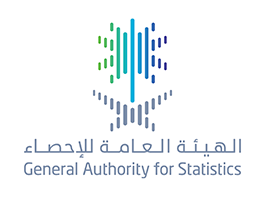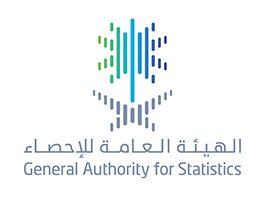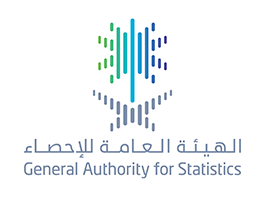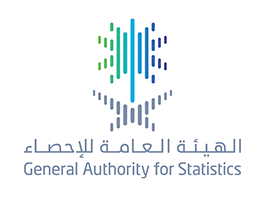
الهيئة العامة للإحصاء: انخفاض معدل البطالة للسعوديين خلال الربع الرابع 2018م مقارنة بالربع السابق
GASTAT releases the Labour Market Bulletin, Quarter (4) 2018
GASTAT: Saudis’ Unemployment Rate Decreases During the fourth Quarter of 2018 Compared to the Previous Quarter
On Sunday Rajab 24th, 1440H. (corresponding to March 31st, 2018) GASTAT released the Labour Market Bulletin for the fourth quarter of 2018 on its official website (www.stats.gov.sa). The bulletin is based on the estimates of the Labour Force Survey that is conducted by GASTAT on a quarterly basis as well as the labour market data from the administrative records available at the related entities (Ministry of Labour and Social Development, Ministry of Civil Affairs, General Organization for Social Insurance, Human Resources Development Fund, and National Information Center).
The results of the 2018 fourth quarter bulletin, based on the estimates of the Labour Force Survey, showed a decrease in the total unemployment rate of Saudis (15 years and above) reaching (12.7%) compared to (12.8%) in the previous quarter. The Saudi males’ unemployment rate reached (6.6%), whereas the unemployment rate of Saudi females reached (32.5%) in the fourth quarter of 2018. The unemployment rate for the total population (15 years and above) stabilized at (6.0%) in the fourth quarter of 2018.
The results of the survey also showed that the economic participation rate of total Saudis (15 years and above) reached (42.0%) in the fourth quarter of 2018. The economic participation rate reached (20.2%) among Saudi females, and (63.0%) among Saudi males in the fourth quarter of 2018. Also, the bulletin indicated that the total employed Saudis (males and females) reached (3,111,199) based on the data of the administrative records.
According to the results of the bulletin and based on the data of the Ministry of Civil Service (Jadarah and Sa’ed) and the data from the Human Resources Development Fund (Taqat), the total number of Saudi job seekers reached (970.229) in the fourth quarter of 2018.
GASTAT has defined jobseekers as Saudi individuals (males and females) registered in job seeking programs of the Ministry of Civil Service (Jadarh and Sa’ed) as well as Human Resources Development Fund (Taqat) where they entered their personal data, qualifications, experiences, and CVs electronically. Jobseekers included in the administrative records are not subjected to the internationally recognized criteria and conditions of the International Labor Organization (ILO); hence, not all of them are considered unemployed individuals. Therefore, not every job seeker is an unemployed individual; they may be looking for a work while still working in another job, as in the case of job seekers in the government sector where they work for their own business and not registered as employees in the governmental administrative records (Civil Service, Social Insurance, commercial registers, and municipal licenses) .

الهيئة العامة للإحصاء: ارتفاع الرقم القياسي لأسعار الجملة خلال شهر فبراير 2019م
GASTAT: Wholesale Price Index Increases in February 2019
On Wednesday, the 13th of Rajab 1440 H/ 20th of March 2019 AD, the General Authority for Statistics (GASTAT) released its the monthly indicator of Saudi wholesale price index for February and it was published on its website www.stats.gov.sa . The indicator recorded (116.5) points with 0.1% increase in February 2019, compared to last month (January) where it recorded (116.4) points. The indicator includes five main sections; agriculture and fisheries products, raw materials and metals, Food products, beverages, tobacco and textiles, metal products, machinery and equipment, and other goods.
The report attributed that increase to the outcome of the changes of the five main sections composing this indicator; metal products, machinery and equipment increased to 1.0%. On the other hand, raw materials and metals decreased by 1.0%, agriculture and fisheries products went down 0.5%, and other goods 0.5%. However, food products, beverages, tobacco and textiles remained without any changes.
Saudi Arabia's wholesale price index measures the average changes in the prices of goods and services sold in primary markets and takes into account the change in price only. Accordingly, all changes resulting from differences in quality, quantity discount, Shipping method, and other influencing factors in order to obtain the net price only after excluding all the mentioned effects. This number is general for all and is prepared in all parts of the Kingdom.
It is worth mentioning that the wholesale price index is used to monitor the changes in the prices of local or imported goods, which are dealt with in the market, and consequently to determine the price trends and the conditions of the market variables. The wholesale price index is one of the important tools used to prepare national accounts, by clearing income and national groups from the impact of price changes.

الهيئة العامة للإحصاء: انخفاض الرقم القياسي العام لأسعار المستهلك لشهر فبراير 2019م بنسبة 0.2%
GASTAT: Consumer Price Index (CPI) Decreases by 0.2% in February, 2019
On Tuesday, Rajab 12th, 1440 H (corresponding to March 19th, 2019), The General Authority for Statistics (GASTAT) released its monthly report of Saudi Arabia’s Consumer Price index (CPI) for last February. The report was published on its official website www.stats.gov.sa.
(CPI) went down 0.2% in February and reached (105.7) points compared to (105.9) points in January at the same year.
On the other hand, the report attributed the monthly decline of the index to the declines of the six sections composing it, which are: housing, water, electricity and gas section with 0.6%, home furnishing and equipment section with 0.4%, food and beverages section with 0.2%, culture and entertainment section with 0.2%, transportation section with 0.1%, and finally telecommunication section with 0.1%.
In contrast, two of the main sections witnessed an increase, which are: restaurant and hotels sections with 0.3 %, and personal goods and services section with 0.2%.
Tobacco section, clothing and shoes section, health and education sections remained stable with no change.

"الإحصاء" تُصدر مؤشر مساهمة المنشآت الصغيرة والمتوسطة في القطاع الخاص للربع الثالث 2018م
Small enterprises’ revenues increase by (0.9%)
“GASTAT” releases the indicator of SMEs contribution to private sector for the third quarter of 2018
On Monday 18th of Rajab 1440 H corresponding 25th of March 2019, the General Authority for Statistics (GASTAT) released the results of SMEs contribution to private sector’ indicator for the third quarter of 2018. The indicator is published on GASTAT official website www.stats.gov.sa. It measures the contribution of SMEs in the growth of the private sector, while reflecting the development of these enterprises.
The results showed an increase in the revenues of small enterprises which employ (6 to 49) workers in the private sector with a percentage of (0.9%) compared to the third quarter of last year (2017). However, the revenues of medium enterprises that employ (50 to 249) workers in the private sector registered (113,654,809) SAR in quarter 3, 2018.
The results also demonstrated an increase in the number of small enterprises workers as they recorded (1,627,482) workers in quarter 3, 2018 with a percentage of (1.8%) compared to the same quarter of 2017.
Regarding the numbers of workers in medium enterprises which employ (50 to 249) workers in the private sector, they increased to reach (917,847) workers in quarter 3, 2018 with a percentage of (2.5%) compared to quarter 3, 2017.
The results of the indicator of SMEs contribution to private sector (quarter 3, 2018) indicated a decrease by (2.4%) in the numbers of workers in micro enterprises which employ (less than 5 workers) in the private sector with (2,015,019) workers during the third quarter of 2018, compared to the third quarter of 2017.
On the other hand, the results also revealed a decrease in the revenues of micro enterprises that employ (less than 5 workers) in the private sector during the third quarter of 2018, with a percentage of (3.0%) compared to the third quarter of 2017, where they registered (171,256,482) SAR.
